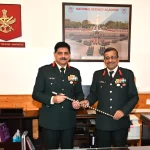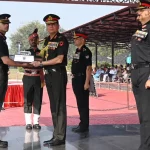In a landmark development for India’s defence aviation sector, French aerospace giant Safran has agreed to transfer 100% of its fighter jet engine technology, including the highly guarded hot section technology, to support the co-development of a next-generation engine for India’s indigenous fifth-generation Advanced Medium Combat Aircraft (AMCA). The breakthrough was reported by the Economic Times and marks one of the most significant technology transfers ever offered by a foreign defence manufacturer.
The joint development will be undertaken with the Defence Research and Development Organisation (DRDO), particularly the Gas Turbine Research Establishment (GTRE), under Indian intellectual property rights. The collaboration will focus on an engine delivering 120–140 kN thrust, enabling the AMCA to meet the performance benchmarks of modern stealth fighters.
The ambitious programme, estimated at $7 billion, includes the development of nine engine prototypes over the next 10–12 years. Prototype testing flights are targeted for 2028, with full-scale production expected by 2035. Several major Indian private sector firms — including Tata Group, Larsen & Toubro, and Adani Defence — are expected to participate in manufacturing and subsystem development.
As part of the broader collaboration, Safran has also indicated readiness to establish an assembly line in India for M88 engines, which power the Rafale fighter jets, if the Indian Air Force places further orders.
A crucial highlight of the transfer is Safran’s agreement to share single-crystal blade technology, an advanced capability essential for withstanding extreme temperatures in modern fighter engines. This know-how will help India close a long-standing technological gap, especially after indigenous efforts like the Kaveri engine fell short of required thrust levels.
The move is expected to significantly boost India’s aerospace self-reliance, as jet engine technology remains one of the world’s most closely protected defence domains. Experts have stressed the importance of India developing a long-term roadmap to fully assimilate these sophisticated technologies and upgrade its domestic defence ecosystem.
In a parallel development, Safran recently inaugurated India’s first global Maintenance, Repair and Overhaul (MRO) facility for LEAP engines in Hyderabad, which power a majority of modern narrow-body aircraft. The facility is poised to reduce India’s reliance on overseas maintenance services and generate high-value jobs.
Safran has also signed a joint venture with Bharat Electronics Limited to co-produce air-to-ground weapons in India, underscoring the deepening defence partnership.
The comprehensive technology transfer and industrial collaboration represent a major milestone for India’s aerospace ambitions, strengthening the AMCA programme and reinforcing India’s emergence as a future global aerospace hub.












